The cost to install gutter guards per foot typically ranges from $6 to $28 per linear foot, including materials and professional installation. Here’s a quick overview:
Quick Cost Overview:
When gutters overflow from clogs, the resulting water damage can be devastating, leading to flooded basements, foundation damage, and thousands in repairs. Gutter guards are your first line of defense against these costly problems. However, not all gutter guards are created equal. The price difference between a basic screen and a premium micro-mesh system reflects significant variations in performance, durability, and long-term value.
Understanding these costs upfront helps you make the right choice for your home and budget. A quality gutter guard system is an investment that pays for itself by reducing maintenance and preventing expensive water damage. This guide will walk you through everything you need to know to make an informed decision.
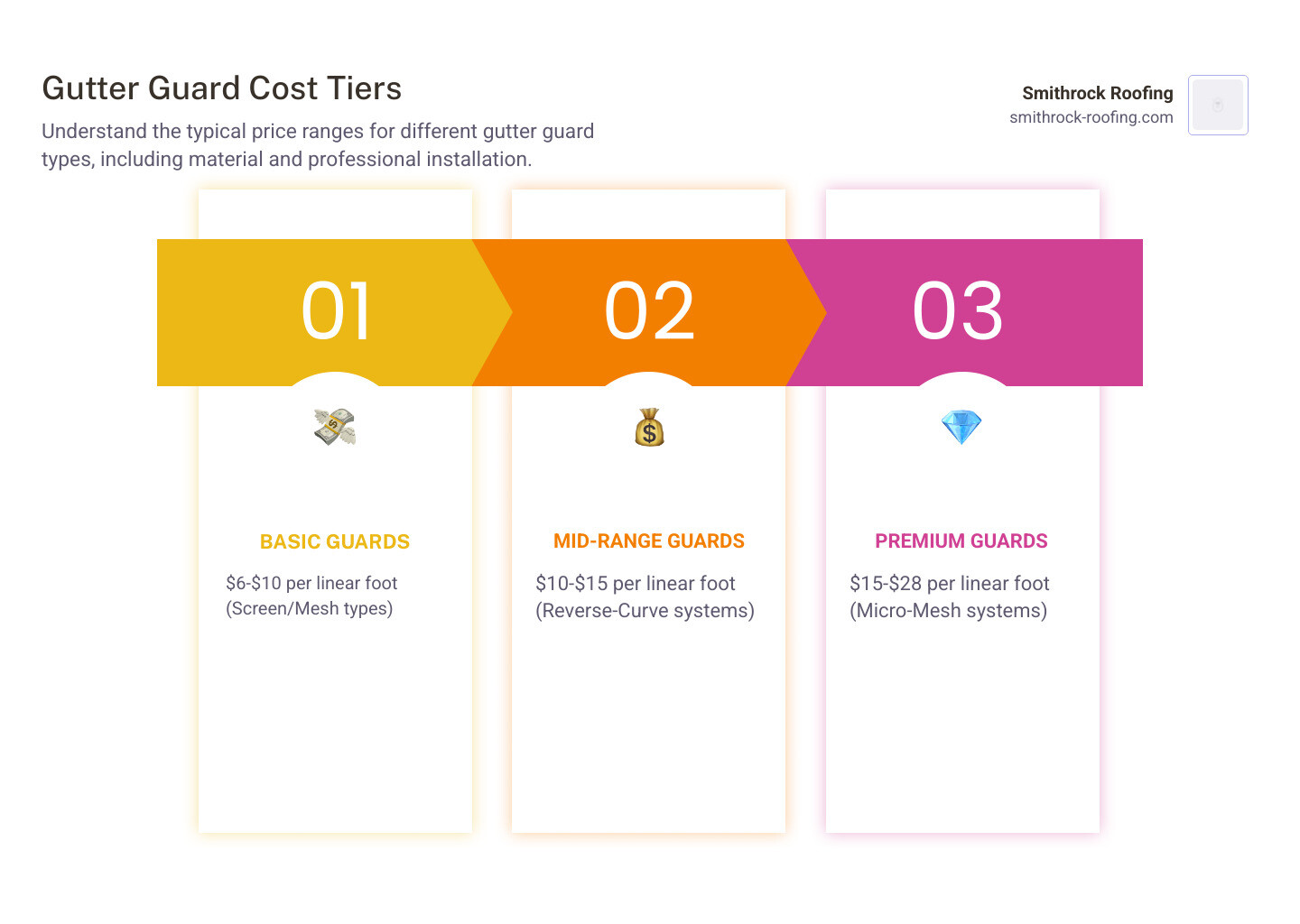
The professional cost to install gutter guards per foot typically falls between $7 and $12 per linear foot, including both materials and labor. However, this range can stretch significantly depending on the system you choose. On the budget end, basic DIY materials can be found for as little as $3 per linear foot, while top-tier, professionally installed systems can reach $25 to $28 per linear foot.
The national average for a complete project is around $1,514, with most homeowners paying between $652 and $2,462. These figures only tell part of the story, as your actual cost depends heavily on the total length of gutters you need to protect.
Most homes have around 200 linear feet of gutters. For a home this size, the total project cost can range from $800 for basic systems to over $5,000 for premium options. Larger homes or those with complex rooflines might see costs exceed $4,525.
Here’s how the math works out for different home sizes:
| Linear Feet of Gutters | Low-End Cost | Average Cost Range | High-End Cost |
|---|---|---|---|
| 150 linear feet | $450 | $1,050 – $1,800 | $3,750 |
| 200 linear feet | $600 | $1,400 – $2,400 | $5,600 |
| 250 linear feet | $750 | $1,750 – $3,000 | $7,000 |
These numbers are variable because they are influenced by more than just materials and labor. The type of guard you select, your roof’s complexity, and even your geographic location play significant roles in the final price. The key is to view this total project cost as an investment in your home’s protection—one that can save you thousands in water damage repairs down the road.
Choosing a gutter guard is like choosing a car: there are basic models, mid-range options with more features, and premium versions with top-tier performance. Understanding the cost to install gutter guards per foot for each type allows you to match your investment to your home’s specific needs. A home with few trees may not require a premium system, but one under a canopy of pines will benefit from a higher-end investment to save on maintenance.
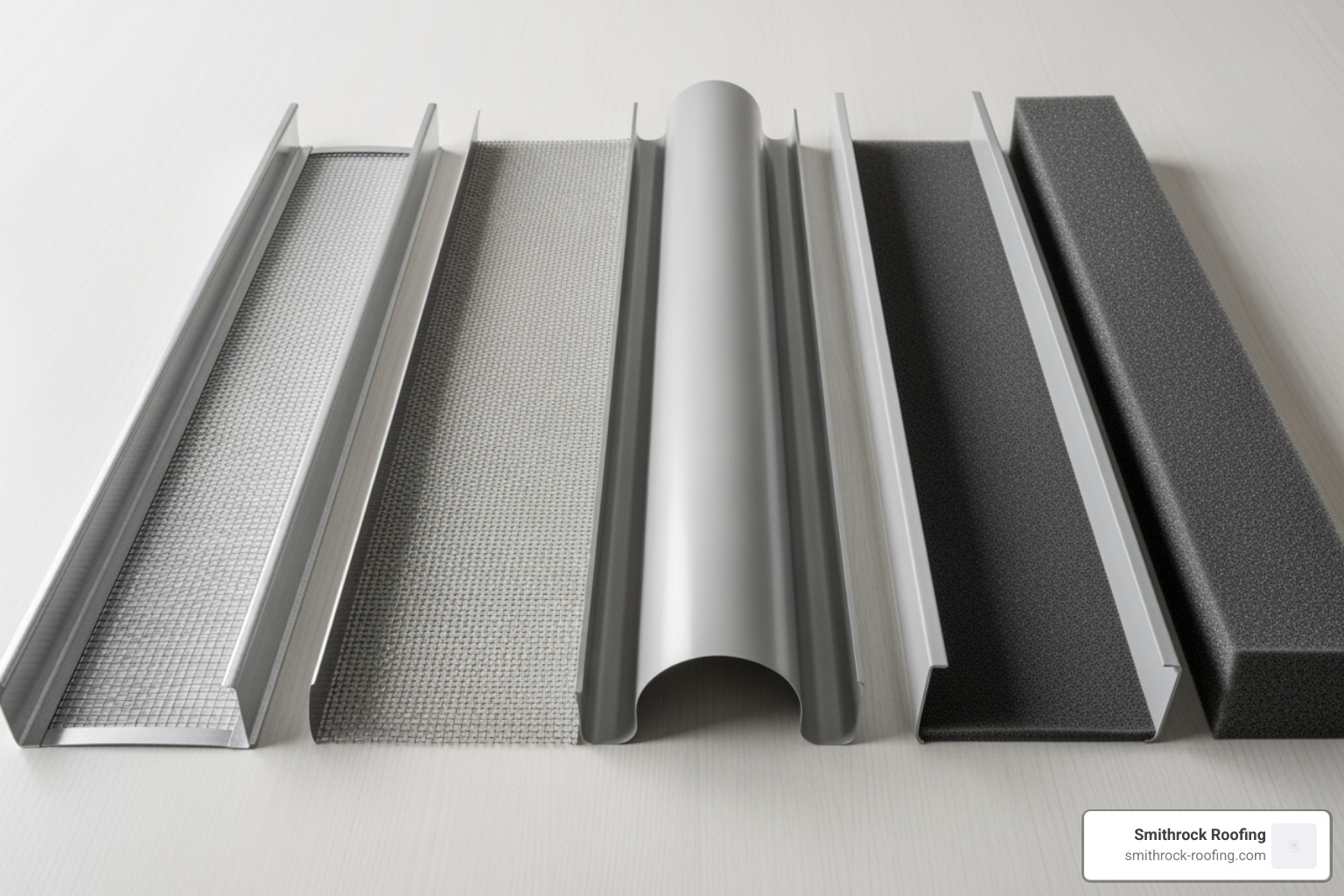
Here’s a detailed breakdown of each type to show you what you get for your money.

The advertised cost to install gutter guards per foot is a starting point. Several project variables can affect your final price, and understanding them upfront can save you from sticker shock later. These factors determine the true investment required for your specific home.
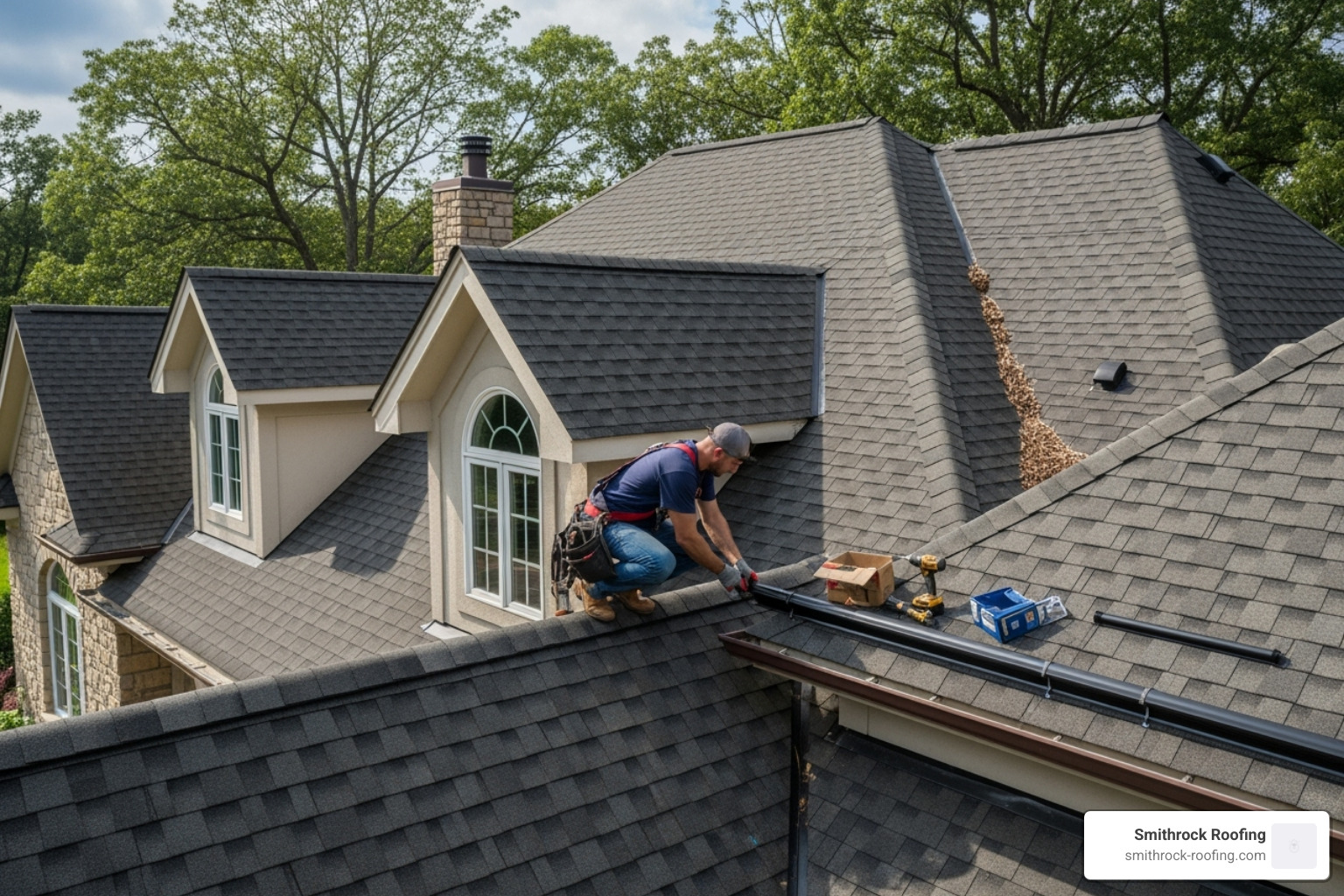
Every project quote is a combination of materials and labor. Material costs can range from as low as $1 per linear foot for DIY plastic screens to over $9 per linear foot for premium micro-mesh systems. The labor portion, however, is often the larger part of the bill, typically running from $4 to $12 per linear foot or more. This labor cost isn’t just for the time spent on your roof; it covers the installer’s expertise, liability insurance, equipment (specialized ladders, scaffolding, safety harnesses), and the time it takes to do the job right. Simple drop-in brush guards take minutes to install, whereas a high-performance micro-mesh system requires precise cutting, fitting to corners, and secure fastening, which is a much more time-intensive and skilled process.
Your home’s unique architecture is a major price driver. Key factors include:
Your existing gutters must be in excellent condition before guards can be installed. A professional installer will always perform an inspection first. Common additional costs include:
Where you live plays a surprisingly large role in the final price.
One of the biggest decisions you’ll face is whether to install gutter guards yourself or hire a professional. The upfront savings of a DIY approach can be tempting, but it’s important to understand the true costs involved, including your time, safety, and the quality of the final result.
Going the DIY route means you’re primarily paying for materials, which typically run between $1 to $5 per linear foot. For a 200-foot home, that’s a material cost of $200 to $1,000. However, you must also account for the cost of tools. You’ll need a sturdy ladder, safety gear, tin snips, a drill, and other supplies, which can add $200 to $500 to your project if you don’t already own them.
Safety is a major factor. Falls from ladders are a common cause of serious injury, and the medical costs can far exceed any savings from DIY. Time is another hidden cost; a typical installation can take a full weekend or longer for an inexperienced person. Finally, there’s the risk of improper installation, which can lead to gaps, poor performance, or even damage to your gutters and roof, costing you more in the long run.
When you hire professionals, the cost to install gutter guards per foot typically runs between $6 and $13, though premium systems can reach $28 per foot. This price is often all-inclusive, covering materials, labor, gutter cleaning, and minor repairs, so there are no hidden costs.
You’re paying for expertise and efficiency. An experienced crew can often complete the job in a single day, ensuring it’s done correctly and to the highest standard. Professionals also have access to professional-grade materials that are more durable than many retail options. Most importantly, professional installation comes with warranties on both workmanship and products, giving you peace of mind. This protection against defects or installation issues is something you don’t get with a DIY project. Proper installation is crucial for moisture control, as detailed in the EPA’s Moisture Control Guidance for Building Design, Construction and Maintenance.
After reviewing the costs, you might wonder if gutter guards are truly worth the money. The answer, for the vast majority of homeowners, is a resounding yes. Gutter guards are not an expense; they are an investment in your home’s long-term health and your own peace of mind, acting as an insurance policy against predictable and costly water damage.
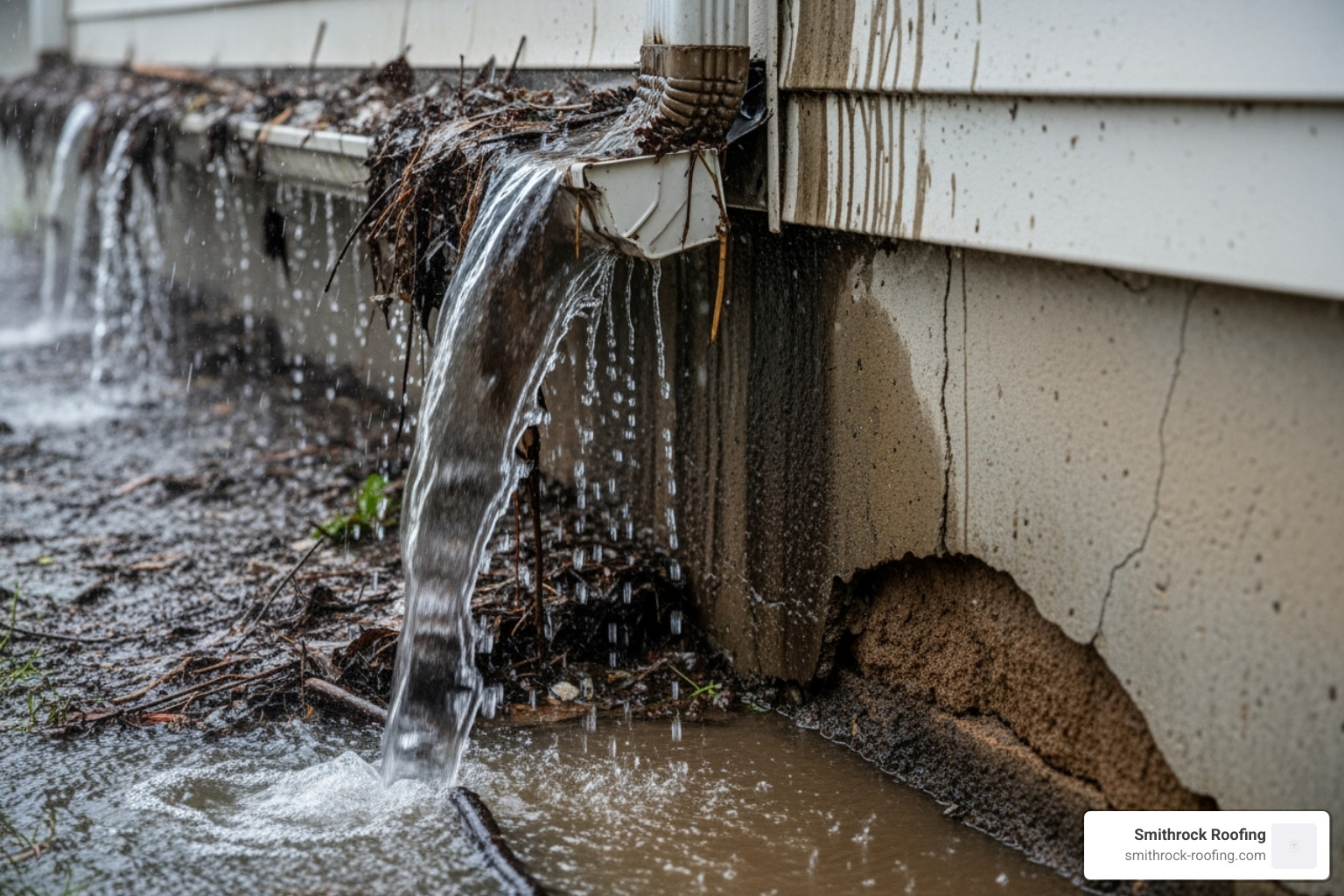
While the upfront cost to install gutter guards per foot can seem significant, it pales in comparison to the cost of repairs from water damage. Clogged gutters are the number one cause of uncontrolled water intrusion around a home. Here’s a look at the potential financial disasters you are preventing:
When you compare a one-time gutter guard installation cost of $1,200-$5,600 to these potential repair bills, the return on investment is clear. A quality system pays for itself the first time it prevents one of these major issues.
Beyond the hard numbers, the value of gutter guards extends to your quality of life.
Beyond the financial and lifestyle savings, gutter guards offer several other key benefits. They provide effective pest and insect prevention by removing the damp, decaying organic matter that serves as a breeding ground for mosquitoes and an attractive nesting spot for birds, squirrels, and rodents. In dry climates or areas prone to wildfires, they significantly reduce fire hazards by preventing a buildup of dry, flammable leaves and pine needles in your gutters, which can be easily ignited by airborne embers. Finally, by ensuring water flows freely and doesn’t sit stagnant, they extend the lifespan of your gutter system itself, preventing the rust and corrosion that leads to premature failure.
Homeowners often have similar questions when considering this investment. Here are answers to some of the most common queries about the cost to install gutter guards per foot and their performance.
While gutter guards significantly reduce cleaning frequency, they provide maintenance reduction, not maintenance elimination. Experts recommend checking them every one to two years. This is a major improvement over the twice-yearly cleaning many homes require without guards. The cleaning process is also much simpler, usually involving just brushing debris off the top of the guards. Some fine sediment might accumulate over many years, but this is minimal compared to the constant battle against leaves and twigs. The exact frequency depends on the guard type and your local environment, particularly the types of trees near your home.
Yes, high-quality gutter guards are engineered to handle heavy rainfall and snow loads. A system’s water flow capacity is a key performance indicator. Quality micro-mesh and reverse-curve designs allow large volumes of water to enter the gutter while blocking debris. Lower-quality guards may clog and overflow during intense storms. For snow and ice, the guard’s material and installation quality are critical. Durable metal guards can withstand heavy snow, but some flat designs can contribute to ice dam formation if not suited for cold climates. At Smithrock Roofing, we recommend systems designed for our local weather, and can pair them with heat cables for extra protection.
While they may not increase appraised value like a kitchen remodel, gutter guards add tangible value and are a significant selling point. They improve curb appeal and signal to buyers that a home has been well-maintained. The promise of reduced maintenance is highly attractive, making your home stand out against properties without this feature. Buyers also understand that guards protect against costly water damage, which is a major benefit. In a competitive market, a home with a quality gutter protection system is often more desirable and can even sell faster.
After exploring the options, it’s clear that investing in gutter guards is a wise decision for protecting your home. The cost to install gutter guards per foot, which ranges from $3 for basic DIY options to over $28 for premium systems, should be weighed against the long-term benefits. The cheapest option is rarely the most cost-effective, as a durable system can protect your home for decades, while a low-cost one may need frequent replacement.
To make the best choice, consider your environment, your home’s specific characteristics, and the long-term savings. A home surrounded by trees will benefit from a high-performance system, while a complex, multi-story roof demands professional installation for safety and effectiveness. The cost of installation is minor compared to the thousands you could spend on water damage repairs.
Professional installation provides peace of mind, expert workmanship, and warranty protection—invaluable benefits that far outweigh the savings of a risky DIY project. At Smithrock Roofing, we have helped countless homeowners in Winston-Salem, King, Clemmons, and across North Carolina make this decision. We understand that the right gutter guard system, properly installed, is a home improvement you’ll appreciate for years to come.
Your home is your biggest investment. Protect it by taking action before a clogged gutter turns into a costly disaster. Ready to secure your home with a system that offers lasting peace of mind? Protect your home with a high-quality gutter system and join the homeowners who have made a smart investment in their property’s future.
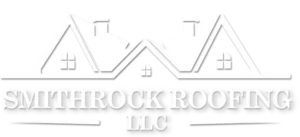
Smithrock Roofing © Copyright 2025 • All Rights Reserved • Privacy Policy • Maintained by Mongoose Digital Marketing